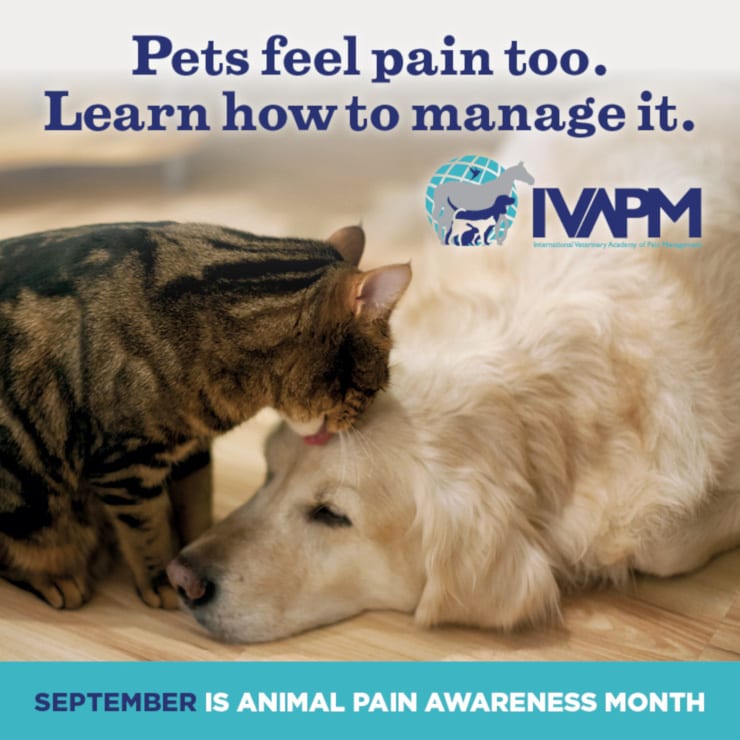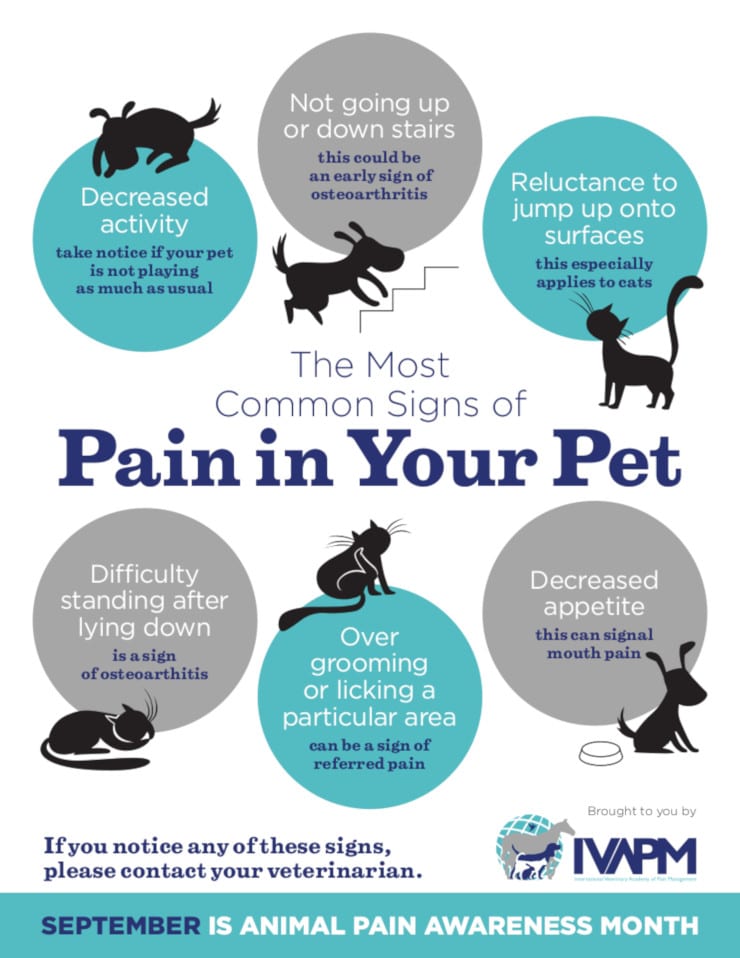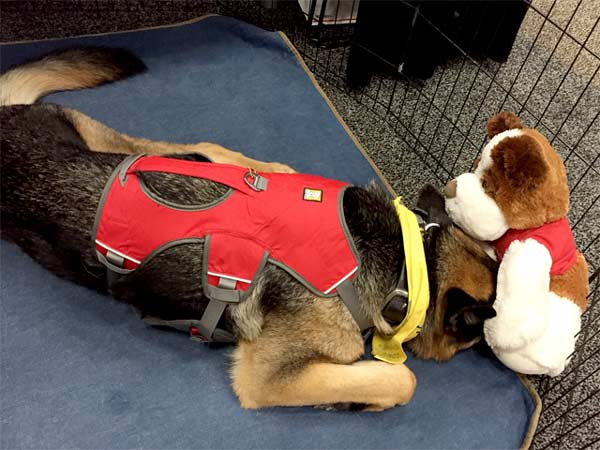For the last few weeks we’ve been discussing medication, vet care and more in our latest Tripawd health video series. But we’re taking a break today to spotlight the signs of pain in pets, as part of Animal Pain Awareness Month!

How to Spot the Signs of Pain in Pets
Our pets can’t “talk” to us in our own language, but they have other ways to communicate when they hurt. We just have to interpret their language and body signals. It’s a trial and error process, but we can learn faster thanks to the work of the International Veterinary Academy of Pain Management (IVAPM).

Since 2001, the IVAPM has been the number one resource for pet pain prevention and management education, for vets and pet parents alike. But there are still more than 45 million household pets suffering from chronic or acute pain, according to the IVAPM.
Every September the IVAPM’s Pain Management Awareness Month serves as a great reminder to us all to be on guard for the signs of pain in pets, like:
Decreased activity
Does your dog seem “stubborn” on walks? Does your cat ignore their favorite catnip toy? Sometimes what we think is laziness or tiredness, is our pets telling us they hurt somewhere. If our pet suddenly refuses to go on their usual walks or do their favorite activities, don’t force it. They’re trying to tell us something.
Avoiding stairs
It’s natural for new Tripawd dogs and cats to be fearful of stairs right after surgery. But if they gradually learned to master stairs, then suddenly refuse to use them, something triggered their reluctance. Was it pain? A fall you didn’t see? It’s hard to say, but it’s important to get your pet checked out by the vet.
Reluctance to jump onto surfaces
Rehabilitation therapists tell us that Tripawds shouldn’t jump from high places, which makes sense if we want to avoid putting stress on their joints. But if your pet has always jumped onto and off the couch or window perch without problems, and now they don’t want to go there, they’re probably giving you a pain signal.
Slow to stand and sit
It’s natural for pets to slow down a little as they age. But an older pet doesn’t have to be an achy pet. Young or mature, if your dog or cat’s legs are quivering when they sit or stand, they’re hurting.
Constantly licking the same body part
Grooming is one thing, but when it becomes obsessive, it’s time to take a look. Gently palpate the area they’re consumed with to look for wounds, burrs or infection. If you don’t see anything and licking continues, it’s time for a vet visit.
Weak appetite
Sure, some pets get tired of eating the same old thing. But there’s a fine line between being picky — or not wanting to eat because of pain. Look in your pet’s mouth, is there anything weird going on in there? If not, and feeding a yummy surprise treat doesn’t help, call your vet immediately. Weak appetite is one of the most common signs of pain in pets.
Pet Pain Signals are Subtle. Keep an Eye Out

“It’s often very hard to know when an animal is suffering. Their signs of pain are subtle and it’s also part of their survival instinct to hide pain,” says IVAPM president-elect Jennifer Johnson, VMD, CVPP.
“That’s why it is so important for veterinarians to conduct pain assessment exams at least annually and certainly as part of regular exams. We know chronic pain can have significant detrimental effects on lifespan and quality of life. By spotting pain early, veterinarians can better treat and manage pain.”
Recommended Reading
What to Expect: Better Post-Amputation Pain Relief for Dogs and Cats
my dog has mast cell cancer, is he in pain?
Emma, that is something only your vet can answer. Please ask your vet to do a pain assessment for your pup.